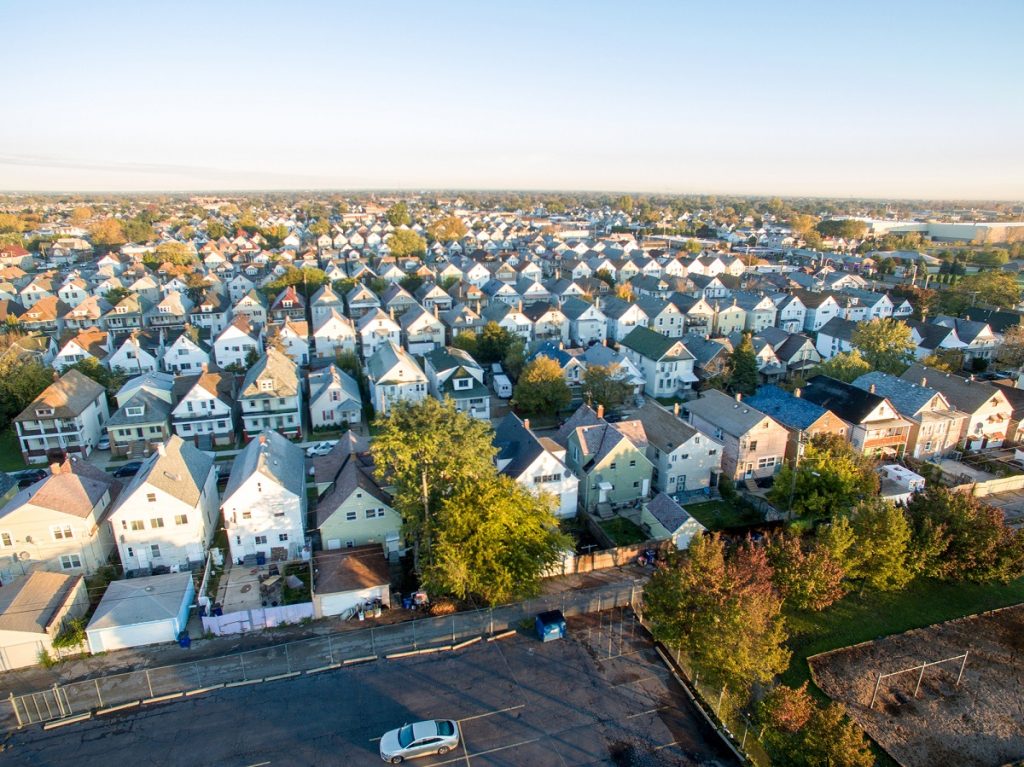Former President Donald Trump reignited the debate over the U.S. housing crisis through a post on his platform “Truth Social,” calling on federal mortgage finance agencies Fannie Mae and Freddie Mac to push major construction companies to “get moving again.” He claimed these companies are “sitting on two million vacant lots.”
Trump insisted that the solution to America’s housing affordability crisis already exists, but developers are hesitant to launch new housing projects despite holding a record number of undeveloped lots that could be turned into homes.
However, no precise nationwide data confirms the exact number of vacant lots. Robert Dietz, Chief Economist at the National Association of Home Builders, told Newsweek: “We don’t have detailed data on land. But about two-thirds of small firms report that land supply is low, mainly due to financing difficulties.”
A 2023 study by CommercialCafe revealed that most vacant land in the U.S. is concentrated in a limited number of large cities, mainly in Texas and California. Five of the cities with the most vacant land are in Texas alone. Dallas tops the list with 90,739 acres of undeveloped land, followed by Fort Worth (74,835 acres), Phoenix (53,022 acres), San Antonio (48,834 acres), Houston (46,168 acres), and Los Angeles (42,228 acres).
Indianapolis ranked seventh with 26,604 acres, followed by Austin (25,117 acres), Jacksonville (24,396 acres), and Denver (17,962 acres). Texas likely has fewer vacant acres today compared to 2023 after a major construction boom over the past five years, though the pace has recently slowed.
According to data from the Texas A&M Real Estate Research Center, the state authorized 126,031 single-family homes between January and October 2023—lower than in 2021 and 2022, which saw post-pandemic peaks. But in 2024, the number of building permits rose to 136,374, making Texas the leading state for permits, ahead of Florida by 20,000 and North Carolina by over 76,000.
Despite this, a Realtor.com report noted that the American South continues to face the largest housing supply-demand imbalance. In 2024, the total U.S. housing deficit reached around 3.8 million units, with the South alone missing 1.15 million homes.
Trump’s message was direct: construction companies should “start building homes.” While he referred to builders as his “friends” and “a key part of America’s success,” he blamed them for prolonging the crisis. “They can get the financing now—they need to start building. They’re sitting on two million vacant lots—a record number. I’m asking Fannie Mae and Freddie Mac to get the big builders moving. That’s how we can revive the American Dream!” he wrote.
This appeal is part of Trump’s 2024 campaign promises to improve housing affordability and increase supply. However, high interest rates, rising home prices, and uncertainty stemming from his administration’s broad tariff policies have caused buyers to hesitate and made developers wary.
Data from the National Association of Home Builders shows that builder confidence in September stood at 32—the lowest since December 2022—indicating deep pessimism in the industry. Additionally, 39% of builders lowered prices that month, the highest rate since the end of the pandemic, while 65% offered marketing incentives.
Dietz believes the solution lies in “providing more financing opportunities for land development and construction,” noting that short-term C-P loans and expanding the secondary financing market for builders could make a significant difference.

